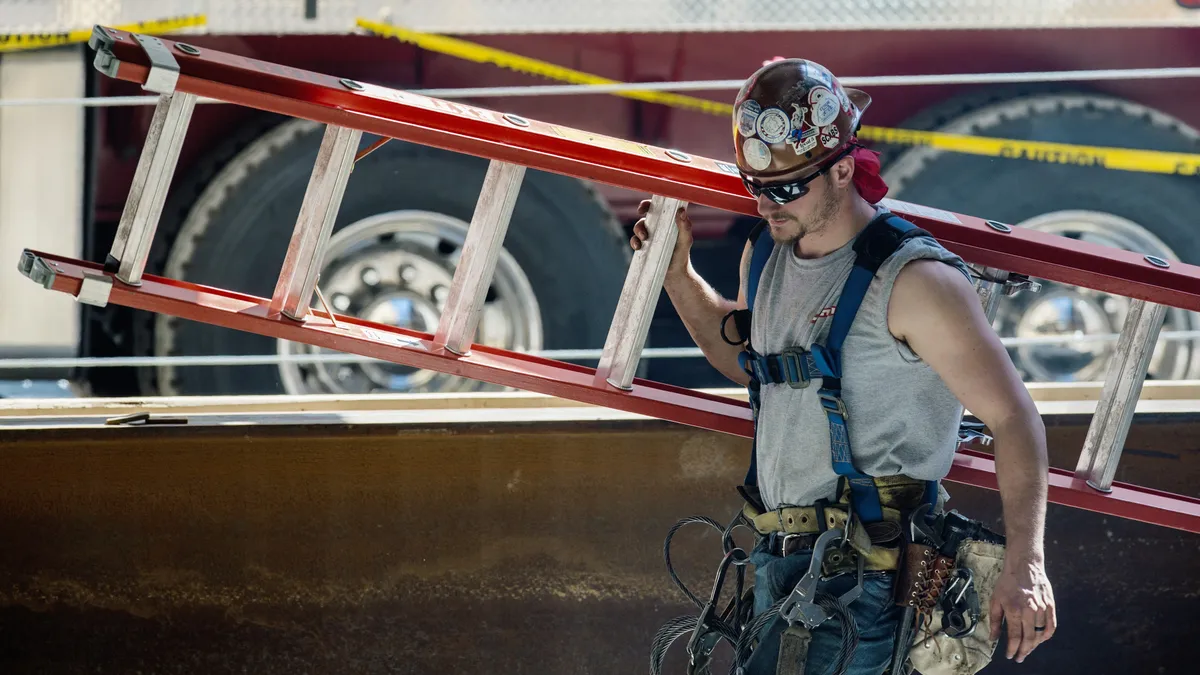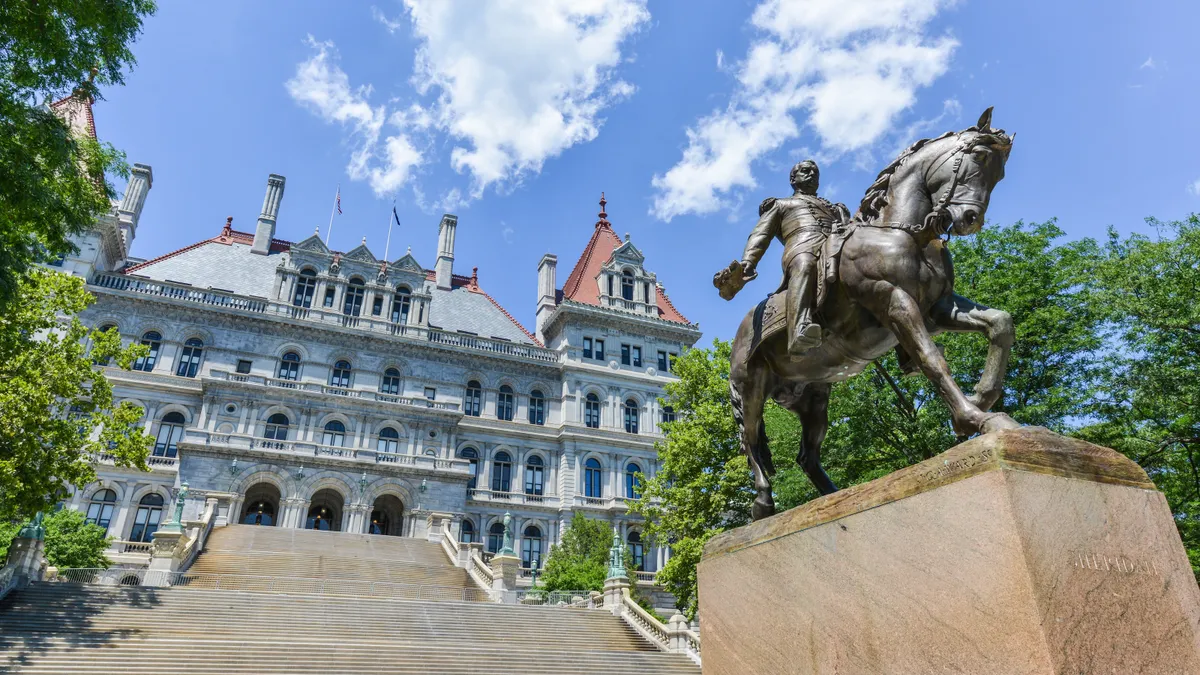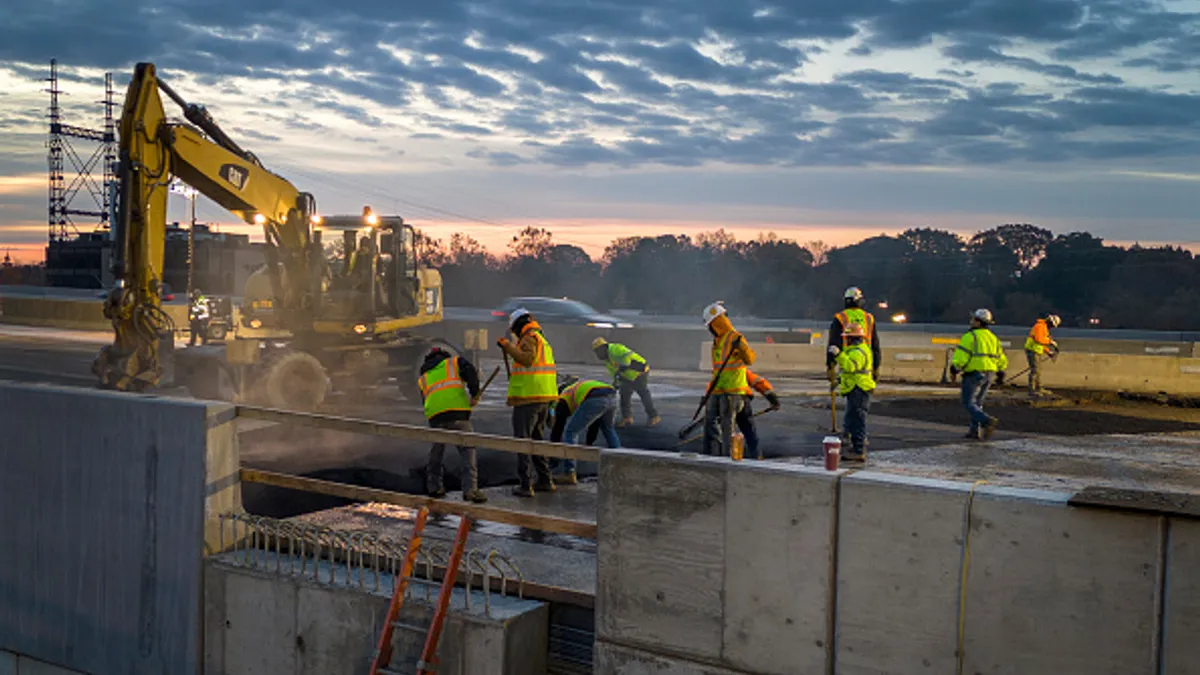Any discussion about foreign workers and immigration will almost immediately spark a heated debate. Bringing foreign workers into the country to fill positions that some believe should be reserved for Americans is a hot-button issue in particular.
However, the flurry of political opinions surrounding the topic might have camouflaged the facts around these worker programs, including how much impact they have on American workers, especially in the construction industry.
Inside the H-2B visa program
There are many classes of worker visas, but, currently, the only foreign worker visa available to U.S. companies allowing them to bring in skilled or unskilled construction labor is the H-2B Temporary Non-Agricultural Workers visa. Management and supervisory personnel have other visa options requiring a bachelor's degree or some other proof of "professional capacity," said Jocelyn Campanaro, partner at Fisher & Phillips in Colorado. "Although (some skilled tradesmen) may have a high level of skill or years of experience, they don't have a professional capacity, and they're not going to qualify for another visa," she said.
The Department of Labor — which sets rules for and administers the H-2B visa program — limits H-2B visas to 66,000 per year, with some exemptions to that total for return workers or certain occupations. The DOL makes 33,000 visas available Oct. 1 and the next 33,000 April 1 on a first-come-first-served basis, so competition is fierce among American companies that would like to bring in foreign labor, according to Campanaro. However, there are extremely cumbersome requirements placed on the U.S. companies that wish to do so.
Requirements to qualify for the program
First, the open position(s) must be of a one-time or seasonal nature. "What we're talking about is a short-term, temporary need," Campanaro said. This requirement excludes any work available year-round. In addition to construction work, this type of visa, she said, is used to fill seasonal positions like those that open up once a year at summer or winter resorts, landscaping companies, hotels and retail stores.
Employers also have to show that there are no American workers "able and willing" to do the work, Campanaro said. This is achieved through a rigorous advertising process that includes newspaper ads, state employment agency notices and job site postings to prove to the DOL that there is truly no American worker available for the position, according to Angelica Ochoa, also a partner at Fisher & Phillips. "There are a lot of extra steps to recruitment that employers don't usually take," Ochoa said.
Companies also must provide documentation verifying their stated labor needs. For example, if a company can only prove it needs 50 temporary pipefitters, it could not try to front-load the application by requesting 100, according to Campanaro. The company would most likely have to show a history of hiring practices, staffing, sales contracts or other proof that would justify the need. During the course of the employer application process, the company also must request a prevailing wage rate for the position from the DOL and pay those incoming workers accordingly.
This wage, however, is only valid for six months, so the employer must submit its application before that set wage expires. Because of all the paperwork, companies usually file their paperwork three to five months in advance of when they will need workers. "All this is done to protect American workers," Ochoa said.
In addition to the regulatory expenses, employers are also obligated to cover all travel and visa expenses for H-2B workers, according to Chad Blocker of Fragomen, Del Rey, Bernsen & Loewy, LLP in California. "It's not just going through the process of filing the applications with the government, paying the legal fees, paying the government filing fees, paying the newspaper ad costs, but they've also got to pay for the transportation to the United States and the transportation home," he said.
As far as the qualifications of the workers, Campanaro said they must meet the same requirements as the company's American workers in regards to experience or background checks. However, foreign nationals are required to undergo a Department of State security check before entering the country. "In most circumstances, they need to go to a consulate and get a visa in their passport, and, to do that, they're going to go through some type of screening," she said.
Once the job is over, then the workers are required to return to their home country unless they can find another employer with a temporary need, according to Ochoa. Foreign H-2B workers can "hop" companies this way for up to three years.
Is H-2B beneficial for construction firms?
While some construction companies can meet these rigorous DOL requirements, Campanaro said the H-2B program is not always a good fit "it's incredibly expensive, and, even if they can show they don't have U.S. workers who are available for the position, they can be very difficult to get approval for."
The lead time that these applications require also makes it a questionable tool for the construction industry versus those industries like hotels and resorts that can predict almost down to the last employee how many workers they will need from season to season, Ochoa said. And, of course, if companies only need a few workers, the process doesn't make financial sense, she added.
With the incredible expense and regulatory paperwork gauntlet involved in bringing H-2B workers into the country, Ochoa said, "there's really no economic advantage for an employer to hire foreign workers over American workers." In fact, there are fewer employers pursuing the H-2B program today than 10 years ago precisely because of the burden, according to Ochoa. "It's always the last resort. The companies that are using it are using it because there is truly no better option," she said.
Opposing sides on the issue
There has been a recent push to increase the current 66,000-worker cap in the H-2B program, and opinions within the construction industry regarding that expansion vary widely.
"Most of these visas go to the hospitality industry in the first couple of days, so it never really had much potential to help many of our members at its current cap," said Brian Turmail, senior executive director of public affairs for the Associated General Contractors of America. In fact, statistics from the Department of Labor show that less than 5% of H-2B visas issued in 2014 were issued for the construction category. The AGC supports an increase in the cap "as a short-term measure to help offset labor shortages while we work to reinvigorate the domestic pipeline for recruiting and preparing future construction workers," he said.
On the opposite side of the issue is Mike Cunningham, executive director and secretary-treasurer of the Texas State Building Trades Council. "There are too many American workers seeking full-time jobs and the construction industry needs to invest in registered apprenticeship training programs, giving those workers an opportunity to work and learn trades — not just for a job, but a career," he said. Cunningham said he opposes any foreign worker program that could take construction jobs away from American workers and said he believes that construction should be removed from the H-2B category altogether, as construction workers are skilled tradesmen "who don't fit the lower-skill level model."
"There are some within the labor movement who believe that the H-2B program is harmful to U.S. workers, although the H-2B regulations do have protections in place," Blocker said. "The Department of Labor and the Department of Homeland Security, which jointly issued new regulations last year, believe that those protections are sufficient to make sure that U.S. workers are not adversely affected by the employment of H-2B workers in the U.S., but there are just different philosophies and different views on whether there are labor shortages."
Opponents to foreign construction workers being hired by U.S. companies also stems from the notion that there is abuse of the system and perhaps workers are "a cheaper deal" or haven't met all of the requirements in place for programs like the H-2B. Adding fuel to that fire are recent allegations that contractors at a California Tesla facility might have brought workers in under B1-B2 visas, underpaid them and neglected to provide safe working conditions. U.S. Sen. Charles Grassley (R-IA) has also asked that federal agencies investigate the visa status of the foreign construction workers at the facility.
"B1-B2 visas — people can do very limited things on those. A B-2 visa is actually a visitor's visa … and the B-1 is business, but you can only attend meetings, meet colleagues and clients and visit facilities and things like that," Ochoa said, not speaking directly to the Tesla case. "You cannot engage in any type of employment. So if an employer is using the B1 to actually have workers do hands-on employment, that is a violation of the law." Ochoa added that companies have abused these types of visas in the past, and, as a result, it is difficult to get them for visitors or business travelers from some countries.
Immigration debate makes it an 'emotional' issue
Campanaro said she believes that some of the fierce opposition to the program comes when people introduce the essentially unrelated immigration and undocumented worker issues, both of which are emotional triggers for many people.
"Anything related to immigration and employment in the U.S. — there is a lot of rhetoric around the issue," Blocker said. "It's a very emotional issue. You have unemployment relatively low from a historical basis, but there are a number of unemployed individuals out there, so they think that jobs should first go to U.S. workers. But if you ask construction companies, they're going to tell you that qualified labor is hard to find."




















